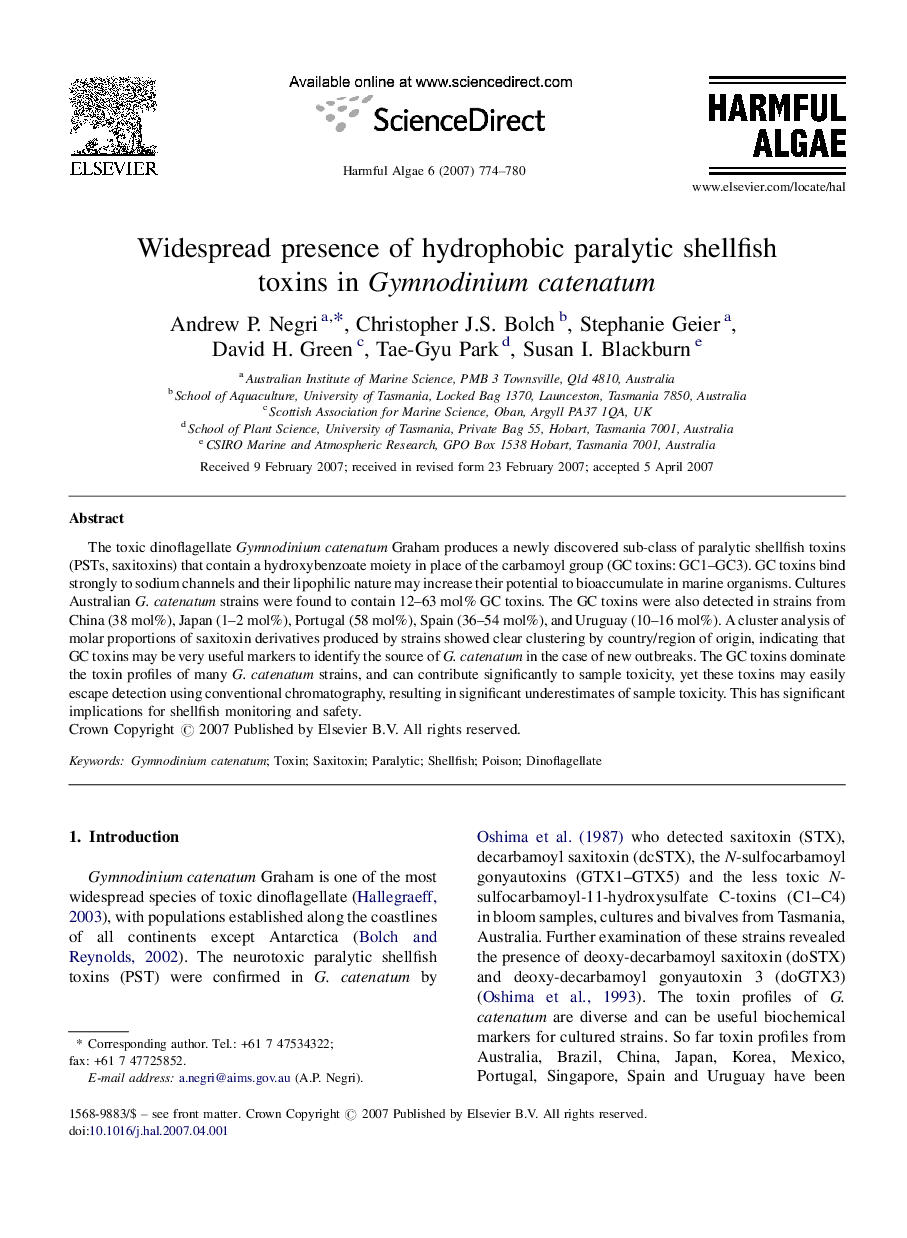| Article ID | Journal | Published Year | Pages | File Type |
|---|---|---|---|---|
| 4546177 | Harmful Algae | 2007 | 7 Pages |
The toxic dinoflagellate Gymnodinium catenatum Graham produces a newly discovered sub-class of paralytic shellfish toxins (PSTs, saxitoxins) that contain a hydroxybenzoate moiety in place of the carbamoyl group (GC toxins: GC1–GC3). GC toxins bind strongly to sodium channels and their lipophilic nature may increase their potential to bioaccumulate in marine organisms. Cultures Australian G. catenatum strains were found to contain 12–63 mol% GC toxins. The GC toxins were also detected in strains from China (38 mol%), Japan (1–2 mol%), Portugal (58 mol%), Spain (36–54 mol%), and Uruguay (10–16 mol%). A cluster analysis of molar proportions of saxitoxin derivatives produced by strains showed clear clustering by country/region of origin, indicating that GC toxins may be very useful markers to identify the source of G. catenatum in the case of new outbreaks. The GC toxins dominate the toxin profiles of many G. catenatum strains, and can contribute significantly to sample toxicity, yet these toxins may easily escape detection using conventional chromatography, resulting in significant underestimates of sample toxicity. This has significant implications for shellfish monitoring and safety.
